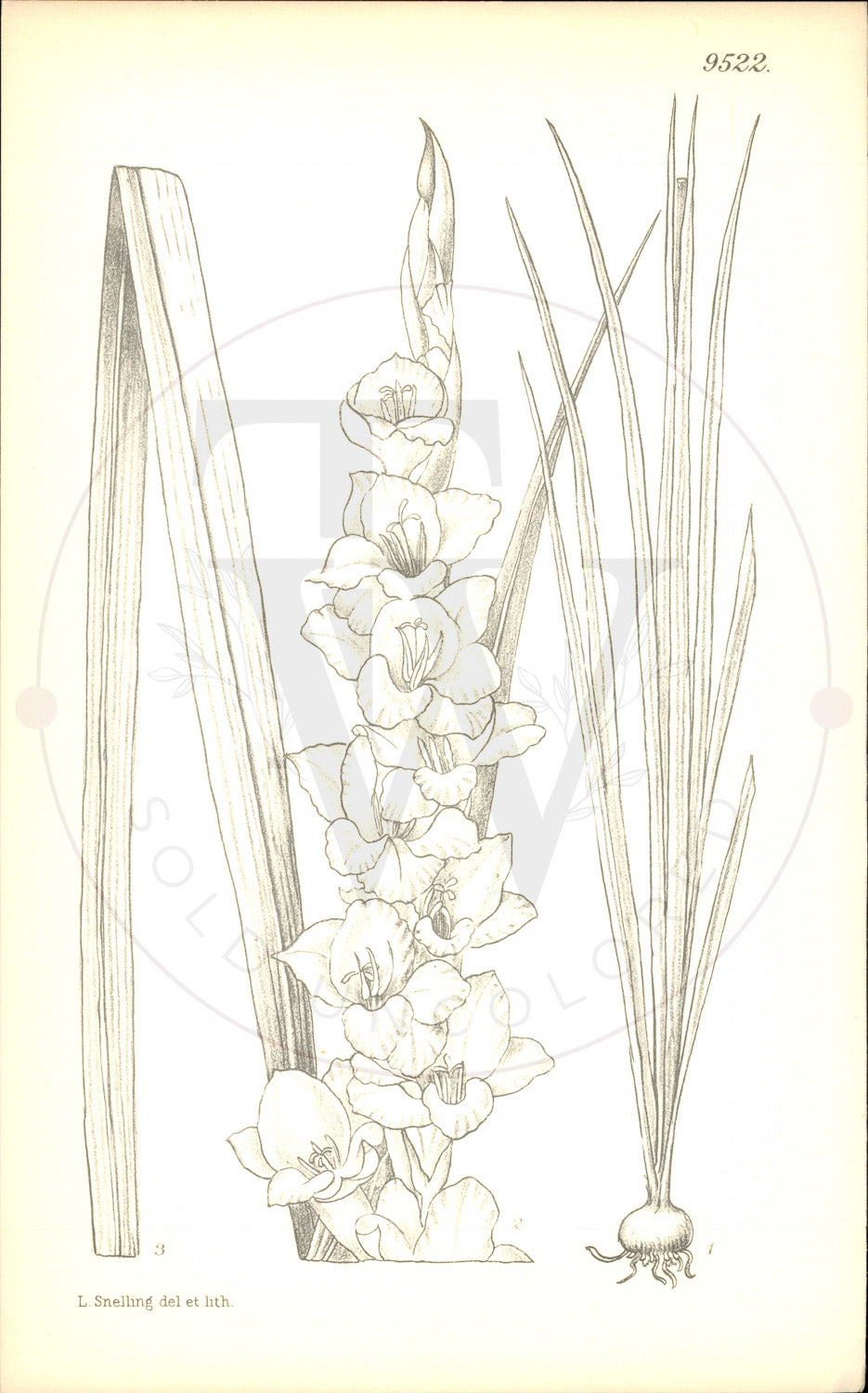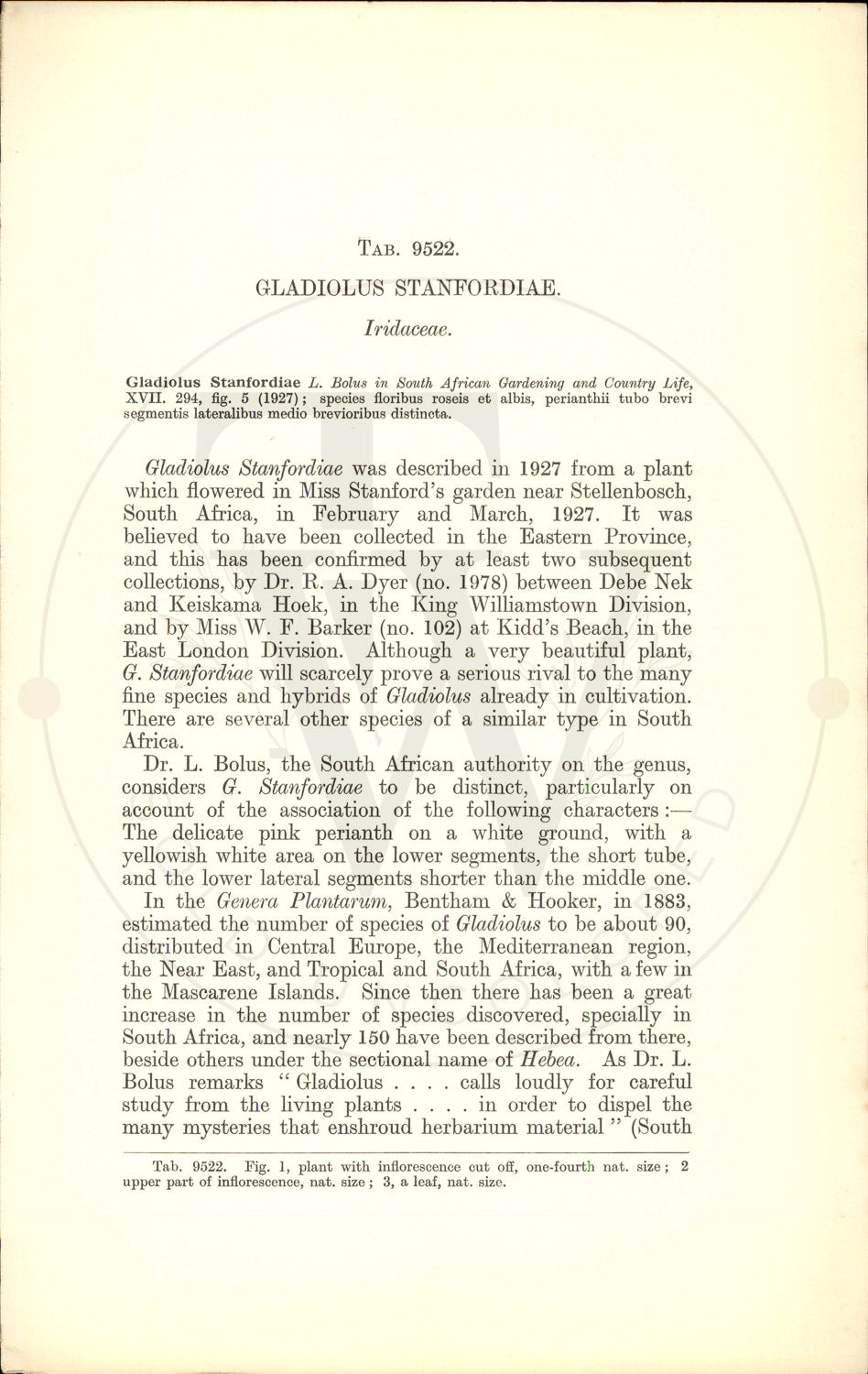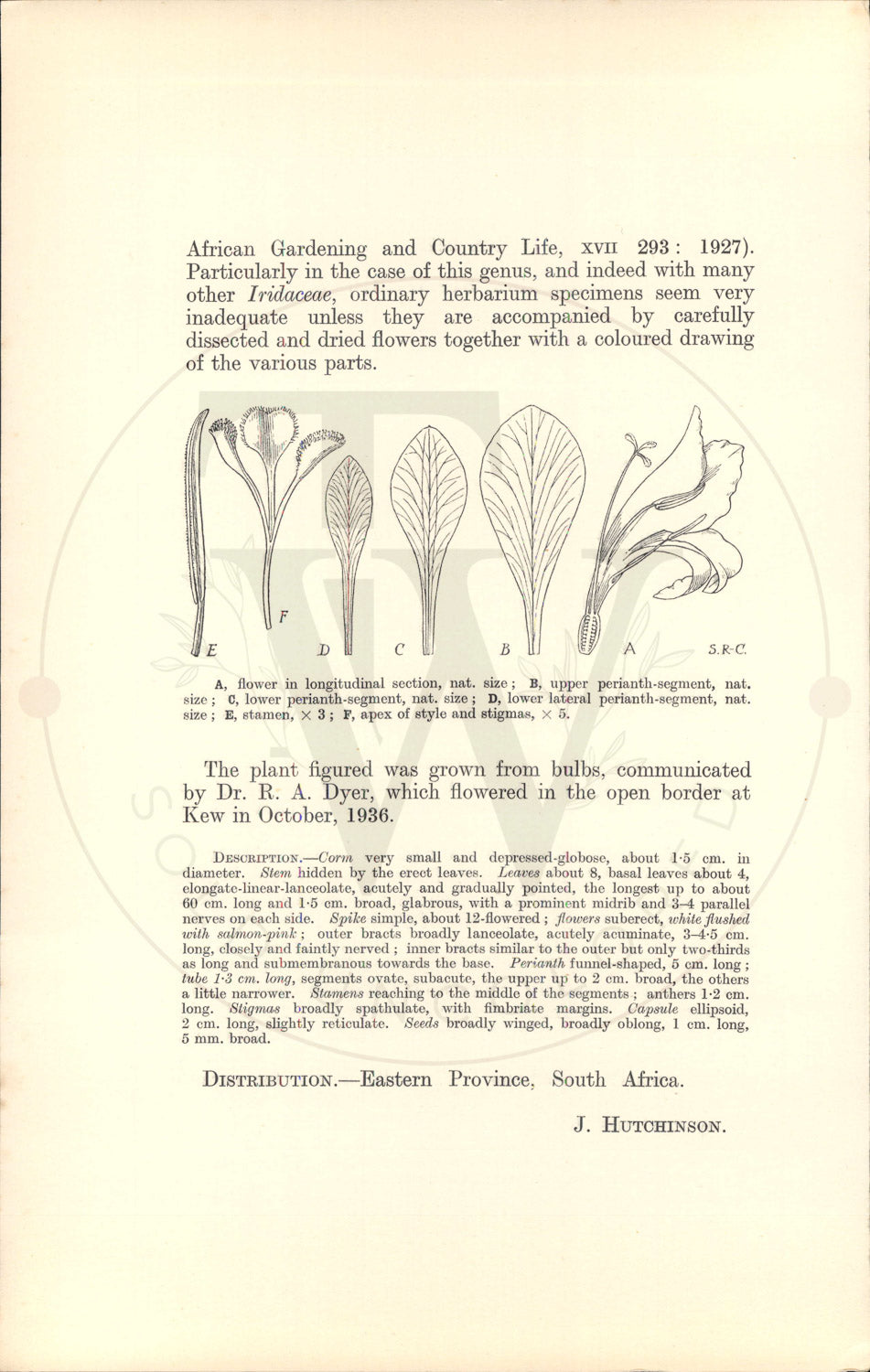Curtis Botanical Magazine
Plate 9522 - Gladiolus stanfordiae
Plate 9522 - Gladiolus stanfordiae
Couldn't load pickup availability
Curtis's Botanical Magazine - Plate 9522
Gladiolus stanfordiae
Family: Iridaceae • Native Region: Mediterranean • Publication Date: January 1st, 1934
Distribution: -Eastern Province, South Africa • Tab Author: J. HUTCHINSON
Botanical Description
Gladiolus Stanfordiae was described in 1927 from a plant which flowered in Miss Stanford's garden near Stellenbosch, South Africa, in February and March, 1927. It was believed to have been collected in the Eastern Province, and this has been confirmed by at least two subsequent collections, by Dr. R. A. Dyer (no. 1978) between Debe Nek and Keiskama Hoek, in the King Williamstown Division, and by Miss W. F. Barker (no. 102) at Kidd's Beach, in the East London Division. Although a very beautiful plant, G. Stanfordiae will scarcely prove a serious rival to the many fine species and hybrids of Gladiolus already in cultivation. There are several other species of a similar type in South Africa. Dr. L. Bolus, the South African authority on the genus, considers G. Stanfordiae to be distinct, particularly on account of the association of the following characters :- The delicate pink perianth on a white ground, with a yellowish white area on the lower segments, the short tube, and the lower lateral segments shorter than the middle one. In the Genera Plantarum, Bentham & Hooker, in 1883, estimated the number of species of Gladiolus to be about 90, distributed in Central Europe, the Mediterranean region, the Near East, and Tropical and South Africa, with a few in the Mascarene Islands. Since then there has been a great increase in the number of species discovered, specially in South Africa, and nearly 150 have been described from there, beside others under the sectional name of Hebea. As Dr. L. Bolus remarks "Gladiolus . . calls loudly for careful study from the living plants in order to dispel the many mysteries that enshroud herbarium material (South.
About This Print
Original black and white uncolored botanical print from Curtis's Botanical Magazine (established 1787). This 9000s series print is from unissued publisher stock, never hand-colored, representing the authentic plate as it appeared in the magazine. Edited by Sir Arthur William Hill for The Royal Horticultural Society, London.
Share







